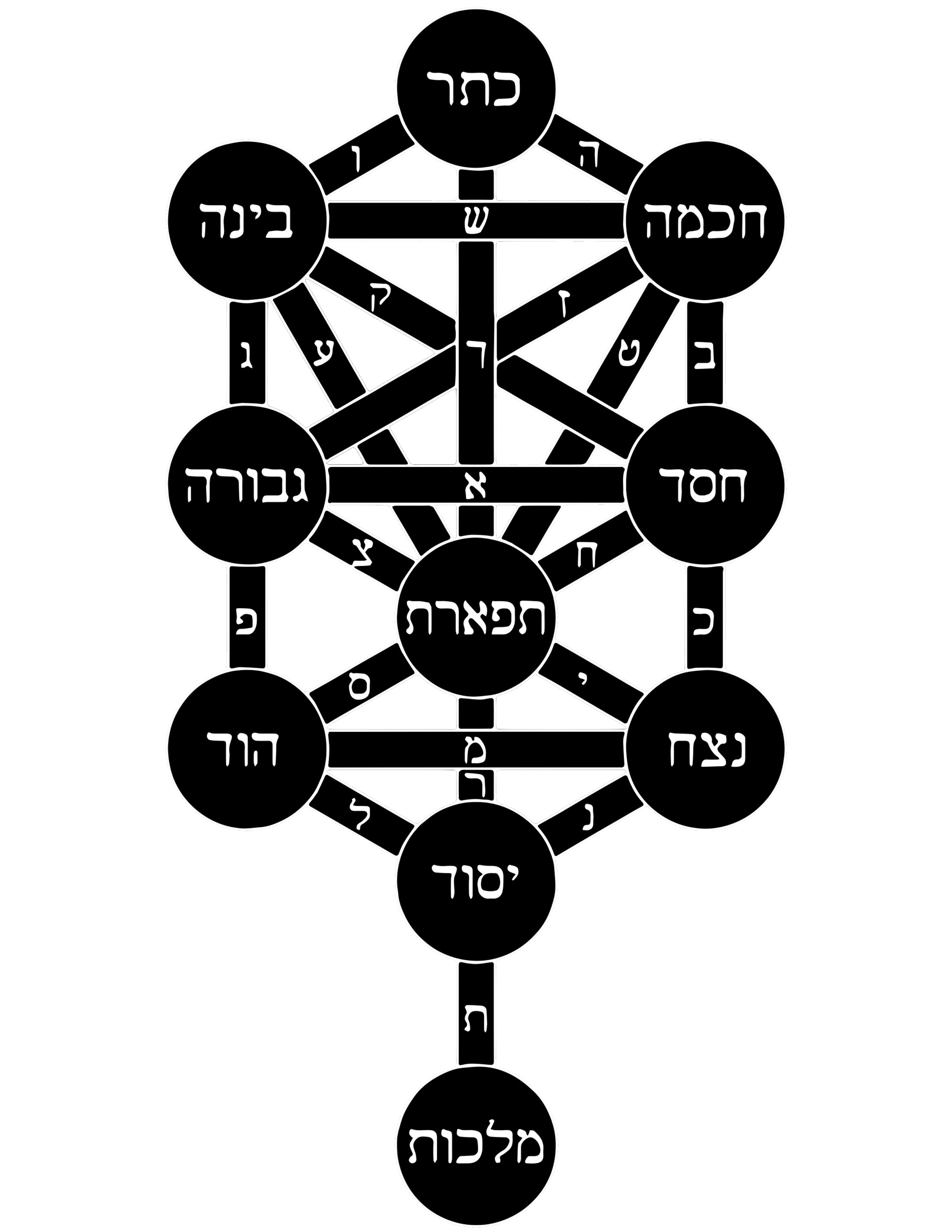Kabbalah, which means "to receive" in Hebrew, is the ancient mystical tradition revealed to the prophets through direct encounters with Angels and the heavenly realms. As Kabbalah is rooted in these direct mystical experiences, it offers an astonishingly detailed exploration of the higher worlds, the sefirot (divine emanations), and the process of creation itself. Because the higher levels of Kabbalah deal with Angelic communication and the ascent to the heavenly realms, it is mind bending in nature.
Ha’adam hu ha’olam katan—man is a microcosm of the entire reality. The structure of the outer world is intertwined with the mechanics of consciousness— both emerge from the same divine Singularity.
The Sefirot are the identifiable attributes of God; they are the architecture of being, the blueprint through which the Infinite manifests the finite. As God’s consciousness produces reality, so too does our consciousness shape our experience of it.
One can think of the Hebrew letters as the subatomic particles that produce reality. These structures of meaning give rise to form. The Sefer Yetzirah teaches that God engraved these letters in the void, combining and permutating them to bring forth existence. Every letter signifies a protocol of consciousness, a frequency through which Ein Sof expresses itself.
So, what is the human being? A vessel, a mirror of these divine forces. The Sefirot exist within us because we are made in the image of God. To study the Sefirot is to study the inner mechanisms of our own soul— and by refining them, by aligning our inner structure with its divine origin, we do not only learn more about God—we become more like God. This is the true meaning of D’veikut (cleaving to the Divine): to so refine one’s perception that the illusion of separation dissolves, and one perceives only unity.
Many seek God outside themselves, thinking “He” is a distant being. Others fall into the trap of ego, believing they themselves are the Source rather than a vessel for it. The true path is neither rejection nor arrogance, but the nullification of the false self so that the true divine self can emerge. We must remember who we are as a soul… consciousness in a body.
The work ahead, then, is twofold:
To map the structure of reality—to show how the Sefirot and Hebrew letters form the framework of existence.
To reveal the inner mechanics of consciousness—to teach how these forces operate within the soul, and how their refinement leads to higher consciousness.
There are mainly three different categories of Kabbalah. Most Kabbalah studied today, even at the rabbinical universities, is theoretical. Theoretical or philosophical Kabbalah involves a lot of reading and contemplation of texts like the Zohar or the Sefer Yetzirah.
Meditative Kabbalah lifts off of the page of the texts and deals more in tangible direct mystical experience. Certain Amulets, Divine names, and other kabbalistic tools may be utilized to achieve varying degrees of ascent.
The last category is magical Kabbalah, in which the practitioner seeks to actually engineer specific outcomes in the material world through manipulation of the forces in the higher realms. Magical Kabbalah has historically been cautioned against, as one must really know what they are doing before dabbling in such a serious art. The practitioner of magical kabbalah must also be righteous and pure intentioned because of the karmic liabilities involved with tampering with creation in this way.
It should be noted that there is another magical system developed in the West called Qabalah. This system, popularized by figures such as Aleister Crowley and other Western occultists, diverges significantly from traditional Jewish Kabbalah. Unfortunately, the popularity of Qabalah has blurred the lines for many unfamiliar with the differences between these traditions. For Jews seeking spiritual growth and understanding, it is extremely important to study authentic Jewish Kabbalah, rooted in the Torah and passed down through generations of Jewish sages. Esteemed sources such as Aryeh Kaplan, the Baal HaSulam, the Baal Shem Tov, and Rabbi Yitzchak Ginsburgh provide a solid foundation for exploring the depth and beauty of this ancient wisdom.
The misuse or misapplication of either Kabbalah or Qabalah can lead to harmful consequences, especially for individuals not grounded in genuine intention or proper guidance. Mysticism delves into profound and hidden aspects of existence, which can attract individuals who may not be prepared for its intensity or complexity. The higher teachings of Kabbalah do have a kind of “schizophrenic-esque paradoxical nature” which may exacerbate mental illness in those inclined to such dispositions. For this reason, studying the higher levels of Kabbalah have been historically protected and reserved only for students who are ready. The story of the four rabbis entering Pardes embodies this warning- read about it here.
All that said, Kabbalah supplies an elaborate map of reality and the mechanisms of consciousness, which the Kabbalist can utilize to tangibly perceive the higher worlds (heavenly realms), and the ultimate Oneness of all existence.



